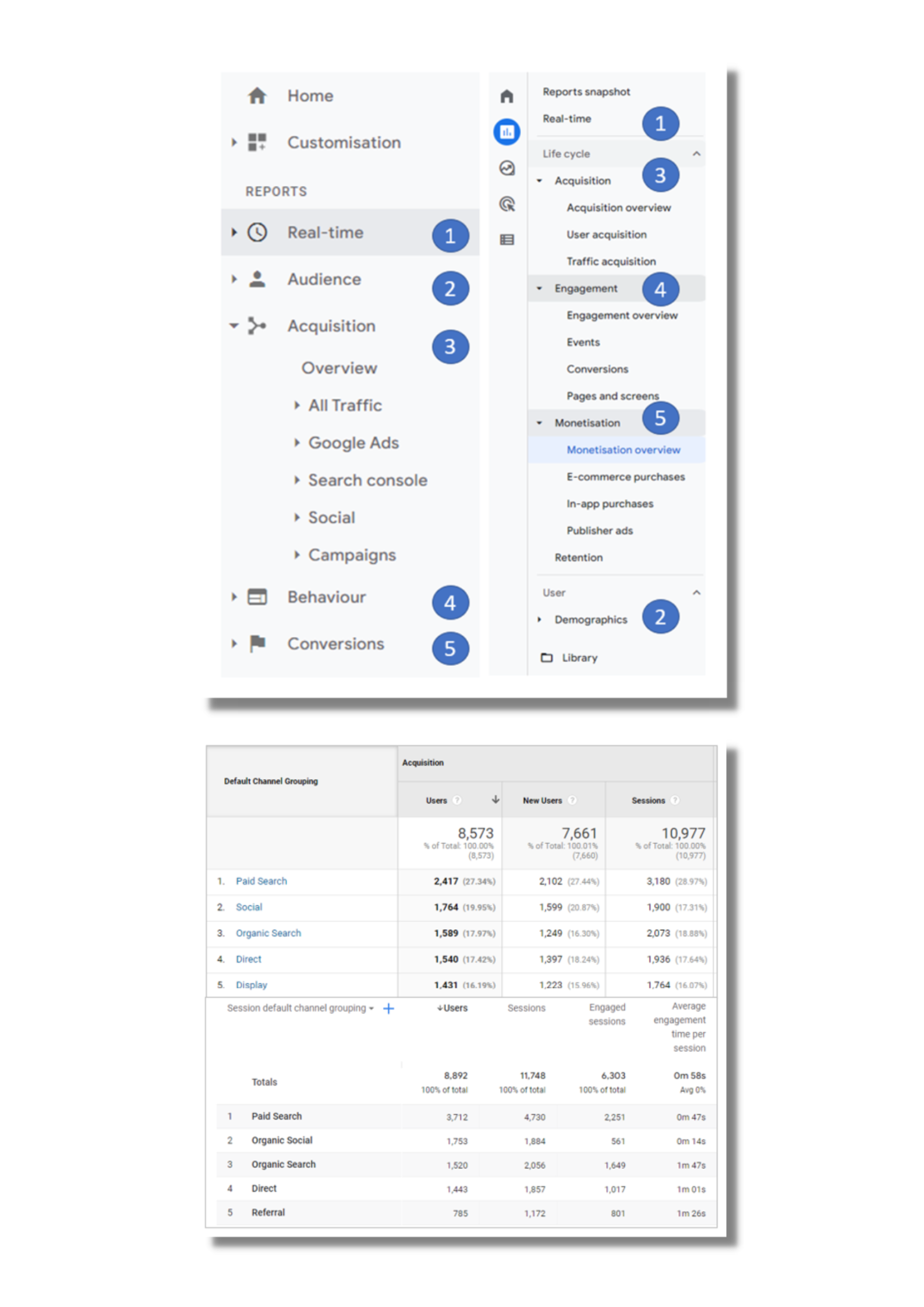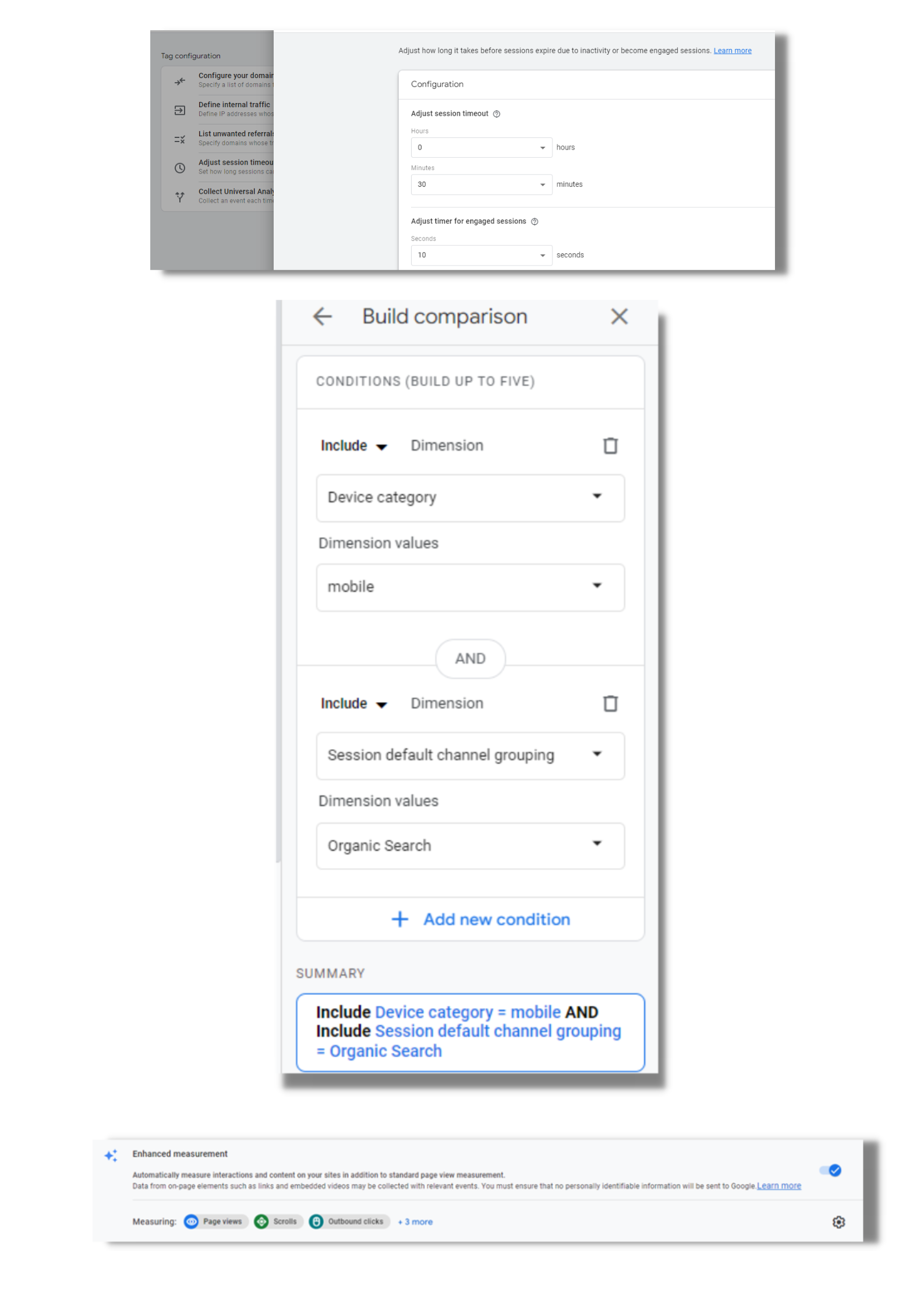
By now you’ve probably heard that Google is winding down Universal Analytics, with support for the data collection platform ending in the middle of next year.
We recently wrote a blog about how Google Analytics 4 (GA4) is the new solution for monitoring website activity, and we hope that most affected businesses and organisations have planned or have completed the process of transitioning website performance tracking from Universal Analytics to Google Analytics 4.
Moving from session-based to event-based tracking requires a new way of thinking, and getting that structure right is crucial to ensuring that the data you collect is logical and efficient. It requires a better understanding of how you should create event-based goals.
Just like Universal Analytics (UA), additional configuration is needed in GA4 to ensure that the data you’re collecting is accurate, clean and easily comparable to previously collected stats.
Ascensor Data Scientist HARDEEP BARGOTA has put together a few tips and extra support to help you set up and get the most out of your GA4 account.
If, after reading this, you still want to know more, you can get a full technical breakdown with Google’s official support document here.

Navigation bar
Rather than having five key menu options to segment data, the navigation bar now has one main menu, with multiple sub-menus to help present the data in a more user-friendly manner. Take a look at this image to better understand where you need to look for the same data in GA4, compared to Universal Analytics.
If you need a more extensive breakdown, read Google’s official support response here.
User discrepancies
One of the first things you’ll probably notice when comparing GA4 and UA is a difference in your user numbers, with users appearing to be higher on GA4.
This is because the two systems use different user-identity methods.
GA4 doesn’t currently support filters and is more focused on the active users (users who are currently engaged), while UA reports the total number of users. Again, more information can be found on the official Google support page here.

Engagements
As Google Analytics 4 moves away from session-based stats, some of the metrics and dimensions we’ve become familiar with will no longer be available after July 2023.
Take exit rate for example, which calculates when a user comes to a page and leaves either the page or the site without carrying out a second interaction/event.
Instead, Google has created a new metric called ‘user_engagement’, which sends the event when a user navigates off the page. This occurs when a user closes their tab or window, or when they navigate to another page or screen.
You can adjust the length of time from the default 10 seconds up to 60 seconds within Data Stream > More Tagging settings.
This will allow you to determine users who spend fewer than ten seconds on a page and is a useful tool when collecting data on blogs or landing pages used for PPC ads.
By adding a comparison tool (normally in the top left) we can segment the data obtained using a secondary dimension like session source/medium. – see the example here on the left.
If you haven’t already enabled enhanced events in the data stream, we recommend doing this at the same time.
Unlike Universal Analytics, which requires additional implementation to conduct event tracking, GA4 will start tracking key engagements if this is enabled.
This includes scroll tracking, outbound clicks, site search and file downloads. The setting can be found in the admin page under the data stream section.
Just click the gear icon under Enhanced Measurement.
Conversions
The key metric for any business in GA4 remains goal conversions. Whether your site’s main function is lead generation or Ecommerce, we need to ensure that Google Analytics has goals to report, so you can measure your performance and check whether you’re hitting targets.
GA4 comes with five-predefined goals. However most of these goals are more suitable for apps than websites. In order to create new goals in GA4, we need to define the condition to trigger a goal completion.
Navigate to the event sections (Configure > events). Here you will find a list of all the events on the account. The furthest right column is a toggle to treat the event as a conversion.
You can then go back to the Reports > engagement > conversion to see events automatically counted as a conversion.
Here you can go into greater detail to see each conversion performance and add a secondary dimension for devices, sessions and acquisition etc. We hope this blog helps you get to grips with GA4.
We’ll be posting a follow-up featuring more advanced settings, including how to set up new events using Google Tag Manager, reporting Ecommerce stats and creating a Data Studio report.
Ascensor’s analytics experts are here to help if you need support with the transition from Universal Analytics to Google Analytics 4. Just click here and we’ll be more than happy to discuss it with you.